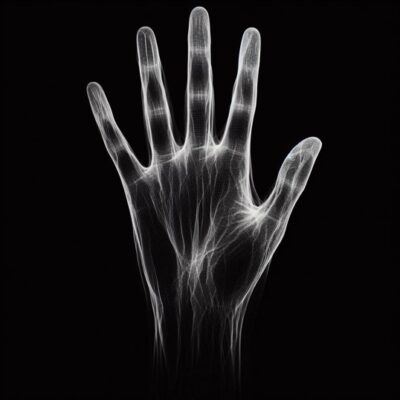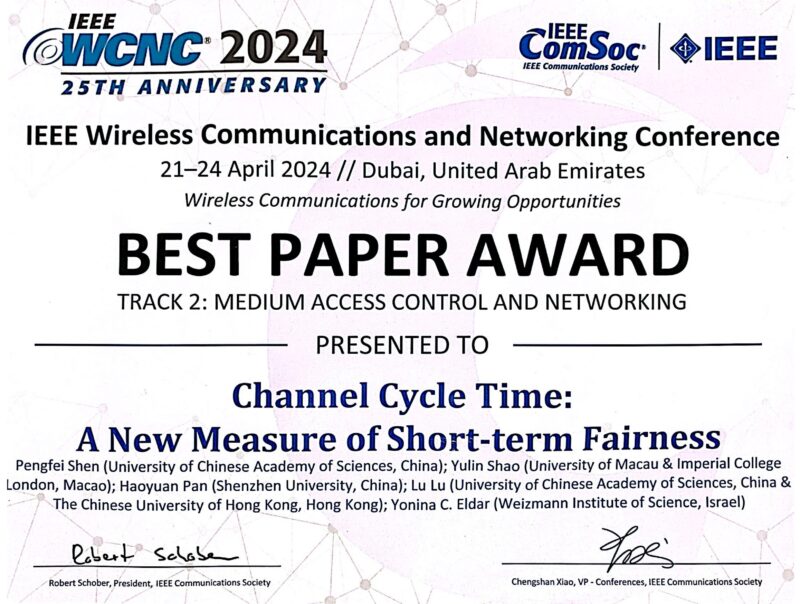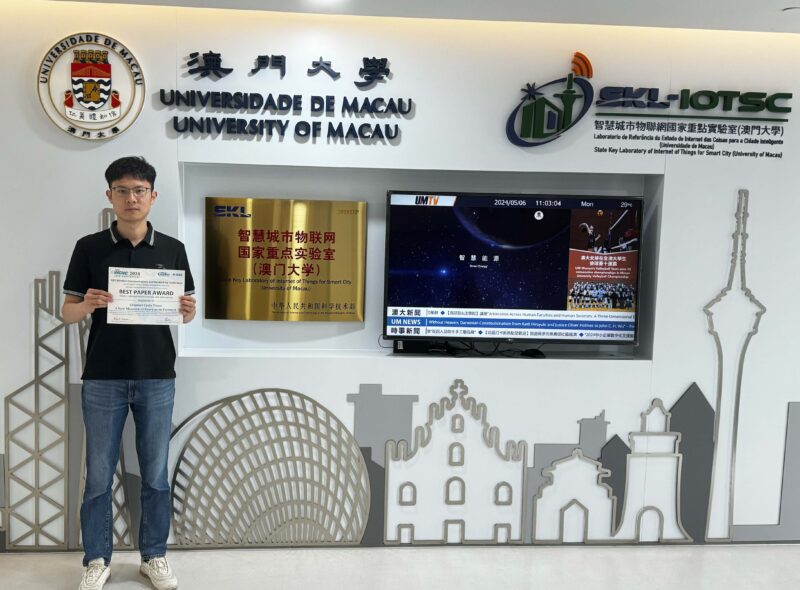人工智慧,作為新一輪科技創新與產業變革的重要驅動力,正引領新興生產力發展的浪潮。 澳門大學科技學院近年在人工智能領域取得了飛躍的進展,大學的人工智慧研究團隊在許多頂尖學術會議中大放異彩,於多個國際會議上發表近40篇高水準論文包括國際電腦視覺與模式識別會議 (IEEE Conference on Computer Vision and Pattern Recognition, CVPR)、國際機器學習會議 (International Conference on Machine Learning, ICML)、國際學習表徵會議 (International Conference on Learning Representations, ICLR)、人工智慧促進協會年會AAAI Conference on Artificial Intelligence, AAAI)、國際人工智慧聯合會議(International Joint Conference on Artificial Intelligence, IJCAI) 等。這些研究成果廣泛涵蓋了視覺-語言大模型、自動駕駛技術、底層視覺解析、穩健性機器學習、人工智慧倫理、目標偵測與分割等多個核心研究板塊,展現了澳大全面且深入的科學研究佈局 。
其中,國際電腦視覺與模式識別會議(CVPR)作為人工智慧斗算機視覺領域頂級年會,其影響力在學術界舉足輕重,在全球所有學術出版物中高居第四位,僅次於《自然 》、《新英格蘭醫學雜誌》和《科學》,並在電腦科學與人工智慧類別中穩居榜首。在激烈競爭中,澳大憑藉9篇入選論文,其中1篇更是被評為 “Highlight” (亮點),位居前3.59%,凸顯了澳大研究的卓越成果。2024年,國際電腦視覺與模式識別會議共吸引了11,532篇論文投稿,經過嚴格篩選,僅2,719篇論文脫穎而出,錄取率僅23.60%。
此外,由人工智慧促進會主辦的工智慧促進協會年會,也是該領域內首屈一指的學術盛事。 2024年會議收到了9,862篇投稿,最後錄用了2,342篇論文,錄取率為23.75%。 澳大在此大會上再創佳績,共有16篇論文成功入圍,其中1篇獲選為Oral Presentation排名前2.00%,再次證明澳大研究在全球人工智慧科研領域中已獲國際肯定。
澳大不僅在人工智慧的關鍵技術研發上不斷突破,更透過在頂級國際會議上的頻繁亮相與展現傑出表現,在國際人工智慧研究的舞台上嶄露頭角,提升了澳門在學術展的國際影響力,為本澳推動新興科技產業及培訓高端科技人才貢獻力量。
Artificial intelligence, as an important driving force behind the new wave of technological innovation and industrial transformation, is leading the development of emerging productivity. Faculty of Science and Technology (FST) at the University of Macau (UM) has made significant progress in the field of artificial intelligence in recent years. The university’s research team in artificial intelligence has achieved remarkable success at many top academic conferences, presenting nearly 40 high-quality papers at international conferences, including the IEEE Conference on Computer Vision and Pattern Recognition (CVPR), the International Conference on Machine Learning (ICML), the International Conference on Learning Representations (ICLR), the AAAI Conference on Artificial Intelligence (AAAI), and the International Joint Conference on Artificial Intelligence (IJCAI). These research achievements cover a wide range of core research areas, including vision-language models, autonomous driving technology, fundamental vision analysis, robust machine learning, artificial intelligence ethics, object detection and segmentation, demonstrating the comprehensive and in-depth scientific research layout of the University of Macau.
Among them, the CVPR, as a top conference in the field of artificial intelligence and computer vision, holds significant influence in the academic community and ranks fourth among all academic publications worldwide, following Nature, The New England Journal of Medicine, and Science. It also ranks first in the category of computer science and artificial intelligence. In fierce competition, the University of Macau stands out with nine selected papers, one of which has been recognized as a “Highlight,” ranking in the top 3.59%, highlighting UM’s outstanding research achievements. In 2024, the CVPR received a total of 11,532 paper submissions and after rigorous selection, only 2,719 papers were accepted, resulting in an acceptance rate of only 23.60%.
In addition, the AAAI Conference on Artificial Intelligence, hosted by the Association for the Advancement of Artificial Intelligence, is also a leading academic event in the field. In 2024, the conference received 9,862 submissions, and finally accepted 2,342 papers, with an acceptance rate of 23.75%. The University of Macau achieved great success at this conference, with a total of 16 papers being selected, and one paper being chosen for an oral presentation, ranking in the top 2.00%. This once again demonstrates international recognition of the University of Macau’s research in the global field of artificial intelligence.
UM not only continues to make breakthroughs in the development of key technologies in artificial intelligence but also showcases outstanding performance through frequent appearances and presentations at top international conferences. It has emerged on the international stage of artificial intelligence research, enhancing Macau’s international influence in academic exhibitions, and contributing to the promotion of emerging technology industries and the training of high-end technical talents in Macau.
澳門大學科技學院電腦與資訊科學系的Michiel Spapé教授,與赫爾辛基大學的Qijia Chen和Giulio Jacucci教授合作,在國際知名期刊《Proceedings of the ACM on Human-Computer Interaction》(PACMHCI)上發表了一項開創性研究,題為《理解商業社交虛擬 現實平台上出現的幻覺觸覺現象》。 這項前沿研究探討了幻覺觸覺現象,即在未使用觸覺設備的情況下,僅憑虛擬實境所提供的沉浸感而體驗到的虛構觸覺感受。
該研究深入分析了來自Reddit的1,408名用戶提交的2,885份報告,這些報告詳細描述了既包括自然發生的也包括有意訓練產生的幻覺觸覺現象。 透過將這些發現與橡膠手錯覺等已知效應相關聯,並融入源自情緒神經科學的理論框架,該研究為理解和研究這一迷人現象提供了更堅實的科學基礎。
「通常情況下,幻覺觸覺感(PTS)只在有專業人士協助的控制實驗室環境中被體驗到,」Michiel Spapé教授說,「但我們的研究表明,商用虛擬實境平台的用戶也在報告體驗 到PTS。我們發現使用者透過三種主要方式獲得PTS:自然產生、有意培養以及藥物誘導。 其他人則認為這是負面的,甚至是痛苦的。
該研究不僅揭示了幻覺觸覺感的原因和變化,也探討了社交虛擬實境環境如何影響使用者對其PTS體驗的評估。 此外,研究也反思了虛擬實境在現實生活場景中使用的潛在風險。
Prof Michiel Spapé, Assistant Professor from the Department of Computer and Information Science of the Faculty of Science and Technology (FST), University of Macau, in collaboration with Qijia Chen and Prof Giulio Jacucci from the University of Helsinki, has published a groundbreaking study titled “Understanding phantom tactile sensation on commercially available social virtual reality platforms” in the《Proceedings of the ACM on Human-Computer Interaction》. This pioneering research investigates the phenomenon of phantom tactile sensation, which refers to illusory sensations of touch experienced without the use of haptic devices, solely relying on the immersive presence of virtual reality.
The study delves into a qualitative exploration of 2,885 user reports from 1,408 individuals on Reddit who describe both spontaneous and intentionally trained versions of phantom tactile sensation. By relating these findings to well-known effects such as the rubber hand illusion and incorporating a theoretical framework derived from affective neuroscience, the research provides a stronger scientific background for understanding and studying this fascinating phenomenon.
“Phantom tactile sensation (PTS) is usually experienced in controlled laboratory settings with professional assistance. However, our research demonstrates that users of commercially available virtual reality platforms are reporting experiencing PTS,” says Prof Michiel Spapé. “We have identified three main ways in which users obtain PTS: natural occurrence, intentional development, and substance-induced effects. Users perceive the sensation differently, with some finding it positive and enhancing their immersion, while others consider it negative or even painful.”
The research not only sheds light on the causes and variations of phantom tactile sensation but also explores how social virtual reality conditions influence users’ evaluation of their PTS experiences. Additionally, the study reflects on the potential risks associated with the use of virtual reality in real-life scenarios.
To view the full paper, please access: https://dl.acm.org/doi/10.1145/3637418
邵郁林 Shao Yulin
澳門大學電機及電腦工程系助理教授邵郁林與多位來自內地及國際高校的學者共同撰寫的論文在2024年IEEE無線通訊與網路會議(Wireless Communications and Networking Conference , WCNC)上榮獲最佳論文獎。合作的學者包括中國科學院大學申鵬飛、深圳大學潘浩源、香港中文大學路璐以及以色列魏茨曼科學研究所(Weizmann Institute of Science) Yonina C. Eldar。文章題為《Channel Cycle Time: A New Measure of Short-term Fairness》(信道循環時間:通訊網路短期公平性新指標),論文提出了一種名為「信道循環時間」(CCT)的全新度量標準,旨在更全面地評估通訊網路的短期公平性。
CCT定義為使用者兩次連續成功傳輸之間的平均時長,且在此期間所有其他使用者至少成功使用信道一次。 相較於現有短期公平度量,CCT特別聚焦於使用者延遲和抖動的瞬態特性,為理解通訊網路的短时動態行為提供了更深入的視角。 研究團隊針對經典通訊協議-時隙Aloha和CSMA/CA進行了深入分析,量化了兩種协议下的CCT,結果顯示CSMA/CA在短期公平性方面表現出顯著優勢。
這項研究成果不僅是一種衡量工具,更是未來通訊網路設計的重要指導原則,強調在短期行為中考慮公平性、延遲和抖動等因素的重要性。 CCT的引入可望引領通訊系統設計的新趨勢,促進資源分配更加公平且有效率。IEEE WCNC作為全球無線通訊領域的頂尖學術會議,是次獲獎是對跨地域科研合作及創新思維的高規格肯定,標誌著在構建公平、高效的下一代無線網路方面取得重大突破。此外,這彰顯了澳門大學通過與國內外頂尖學府的合作,有效推動了學術成果的產出,跨校合作不僅促進了複雜問題的解決,加速了學科間的交叉融合,還增強了澳門大學在全球高等教育和學術領域的影響力。
The paper titled “Channel Cycle Time: A New Measure of Short-term Fairness,” co-authored by Assistant Professor Shao Yulin from the Department of Electrical and Computer Engineering at the University of Macau (UM), along with several scholars from mainland China and international universities, received the Best Paper Award at the 2024 IEEE Wireless Communications and Networking Conference (WCNC). The collaborating scholars include Pengfei Shen from the University of Chinese Academy of Sciences, Haoyuan Pan from Shenzhen University, Lu Lu from the Chinese University of Hong Kong, and Yonina C. Eldar from the Weizmann Institute of Science in Israel.
The paper proposes a new metric called “Channel Cycle Time” (CCT) as a novel measure to comprehensively evaluate the short-term fairness of communication networks. CCT is defined as the average duration between two consecutive successful transmissions of a user, during which all other users have successfully accessed the channel at least once. Unlike existing short-term fairness measures, CCT focuses specifically on the transient dynamics of users’ delays and jitter, providing a deeper perspective for understanding the dynamic behavior of communication networks. The research team conducted an in-depth analysis of two classical communication protocols, slotted Aloha and CSMA/CA, and quantified the CCTs for both protocols. The results showed that CSMA/CA exhibits significantly better short-term fairness.
This research contribution not only serves as a measurement tool but also provides important guiding principles for the future design of communication networks, emphasizing the importance of considering fairness, delay, and jitter in short-term behaviors. The introduction of CCT is expected to lead to new trends in communication system design, promoting fair and efficient resource allocation. The recognition received at the IEEE WCNC, as a top academic conference in the field of wireless communications worldwide, signifies a high-level acknowledgment of cross-regional scientific collaboration and innovative thinking, marking a significant breakthrough in the construction of fair and efficient next-generation wireless networks. Furthermore, it demonstrates the UM’s enhanced influence in global higher education and academic domains through its collaborations with top domestic and international institutions, effectively promoting the output of academic achievements, facilitating the resolution of complex problems, accelerating interdisciplinary integration, and strengthening the university’s global impact.
To view the full paper, please access: https://arxiv.org/abs/2305.11651





